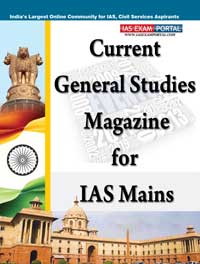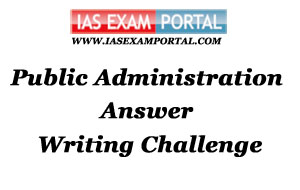
Current General Studies Magazine (April 2017)
General Studies - III "Science and Technology based
Article" (India as member of the International Energy Agency)
At the November 2015 launch of the special edition of the International Energy Agency’s (IEA) World Energy Outlook series on the Indian energy sector, the Agency’s executive director, Dr. Fatih Birol, had noted that “We can’t talk about the future of the global energy markets without talking with India.” Therefore, when India joined the ranks of the IEA’s membership on March 30, 2017, albeit as a “Member by Associate”, it was seen as inevitable. Moreover, long before India formally came on board the IEA, it had been engaging with the organisation. As early as 1998, India had signed the Declaration of Cooperation covering issues related to energy security and statistics. Subsequently, it had signed three Joint Statements with the IEA – the last one in 2013 – which covered various areas of mutual interest in the energy spectrum. However, the priority area for co-operation had been in oil and gas security and, to that end, the IEA and India’s Ministry for Petroleum and Natural Gas (Mo&PNG) signed a Memorandum of Understanding (MoU) in 2011, the first time that the IEA signed one with a key partner country in the area of emergency preparedness.
Interestingly, despite the cooperative nature of the relationship, India has been wary in committing itself to the IEA’s agenda. In fact, before 2011, the then Prime Minister’s Office had asked the Mo&PNG for a position paper on “Whether India should Join IEA”. At that time, the ministry had recommended that while India should collaborate with the IEA’s programmes through agreements and MoUs such as the IEA’s Global Energy Emergency Response System, which dealt with oil supply disruption exercises and contingency plans with member countries, it should not become a member of the organisation per se. The rationale then was that while interacting and cooperating with the IEA would allow India to maximise the strategic depth of its crude oil reserves as well as benefit from the IEA’s technical assistance in the energy sector, it would preclude it from taking on the obligations entailed by membership. As a result, India signed the said MoU, whereby the petroleum ministry and the IEA agreed to work together on strengthening and developing the oil stockholding regime and the emergency response policies as well as the exchange of information in the oil and gas sectors.
However, over time, and with the increasing move towards greater integration with the global energy market, the government has been interacting more frequently with the Agency, holding high level policy dialogues and workshops, joint research and analyses projects on energy sectors and markets, and exchanging technical know-how and information on future projections.
The question that therefore behoves asking is this: if India was in any case benefiting from informal interaction with the IEA, why did it go back on its earlier decision and formally join the organisation? The IEA’s rationale for inviting non-OECD countries to join it is evident, as the agency benefits from the growing association of emerging economies by gaining access to their data and by adding to the oil stockpiles in the event of supply disruptions, which is its raison d’etre. Second, given the IEA’s growing role in combating climate change, it allows the promotion of clean energy technologies in some of the world’s largest carbon emitters. But what additional benefits would India gain as a member of the IEA over and above what it has gained as a non-member?
The answer may well lie in the current government’s goal of not only providing access to electricity for the people under its “24x7 Power For All” initiative but also in meeting its climate change targets undertaken under the Paris Climate change agreement. Moreover, it will provide India the geopolitical platform to take the lead in climate and energy issues. As the Minister for Power as well as Renewable Energy Piyush Goyal said on the occasion of India’s accession to the IEA membership, not only is deeper engagement with the IEA a component of achieving the ‘Power for All’ initiative but it would also give India an opportunity to become the voice of the developing world. In particular, he was referring to the International Solar Alliance (ISA) initiative.
The ISA is an Indian initiative that was first proposed by Prime Minister Modi during a November 2015 speech at the Wembley Stadium. On that occasion, he called upon countries with abundant sunlight “stretching between the Tropic of Cancer and the Tropic of Capricorn” to work for the efficient exploitation of solar energy in order to reduce dependence on fossil based fuels. Thereafter, Modi, along with French President Francois Hollande, launched the initiative in Paris ahead of the COP 21conference in November 2015. The goal of the Alliance is to raise USD 500 billion from public finances matched by another USD 500 billion from the private sector in order to have 1,000 GW (100,0000 MW) global capacity of solar power by 2030.
At the time, however, the Obama administration had been ambivalent about the ISA. Although it expressed support for the concept, it preferred that the ISA be kept as an informal arrangement since a formal ‘treaty arrangement’ would require congressional approval which may not be forthcoming from a Republican-dominated Congress determined to oppose the Democratic administration’s initiative in this regard. But India was of the opinion that, without a treaty, the Alliance would lack teeth, particularly in the event of a dispute.
Eventually, the Framework Agreement of the ISA was opened for signature in Marrakesh, Morocco, in November 2016. 121 countries have joined the Alliance whose headquarters is in Gurugram (Gurgaon). The ISA is based on three objectives – lower the price of solar panels and solar power in general by increasing demand; standardise solar technologies through collaboration in technological innovation, which would also help to bring down the price of solar energy; and, foster research and development, particularly in storage technology.
For India, the ISA provides it with a platform to position itself as a leader on the world energy and environment stage. However, given that the success of the initiative will depend largely on the number of countries coming on board, collaboration with other multilateral bodies, including the UN, IEA, IRENA (International Renewable Energy Agency) as well as corporates and industry, among others, is critical as these will assist in adapting the technologies needed by developing member countries to their specific conditions and economic realities. Given that over 70 per cent of the world's energy consumption comes under the IEA umbrella, the association with the IEA will substantially increase India’s relevance in global energy governance. Finally, and more importantly, the IEA can encourage financial institutions to support India’s energy, particularly, its solar energy programme.
(Source- Shebonti Ray Dadwal@IDSA)






